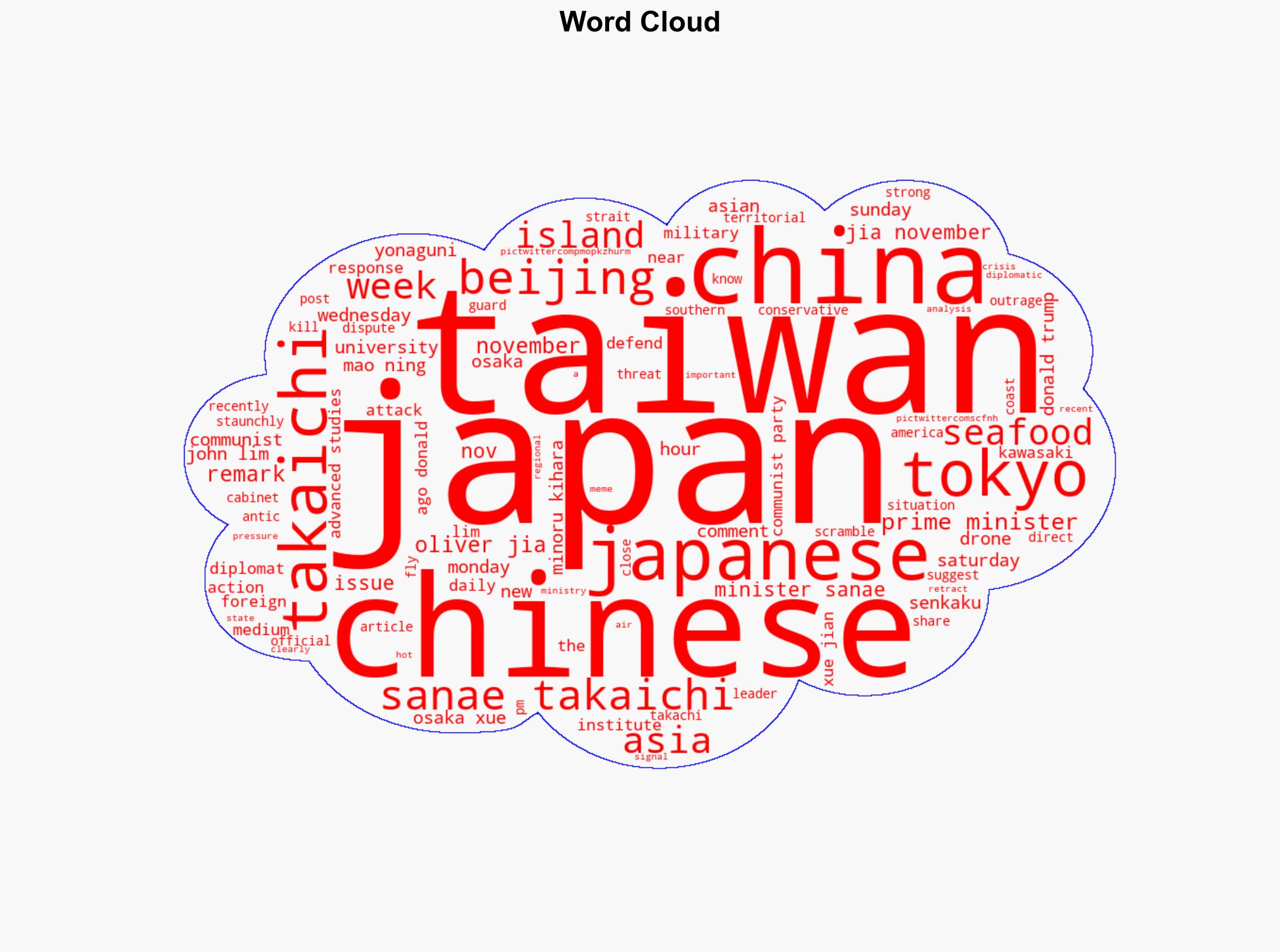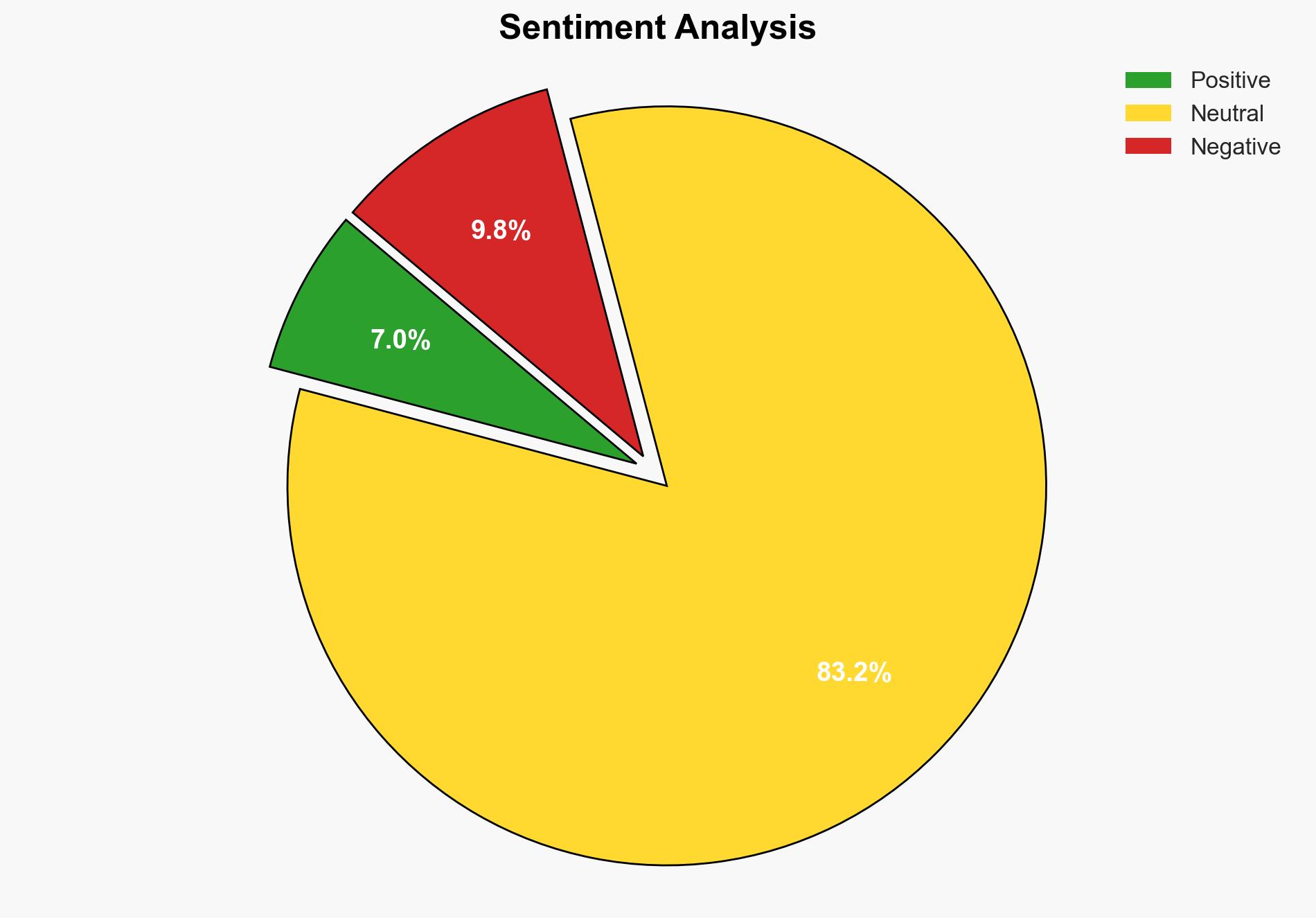Japan Scrambles Jets After China Flies Drone Near Island Close to Taiwan – Legalinsurrection.com
Published on: 2025-11-21
AI-powered OSINT brief from verified open sources. Automated NLP signal extraction with human verification. See our Methodology and Why WorldWideWatchers.
Intelligence Report:
1. BLUF (Bottom Line Up Front)
The strategic judgment is that Japan’s recent military response to Chinese drone activity near Yonaguni Island is a calculated move to assert its defense posture amid rising tensions over Taiwan. The most supported hypothesis is that Japan is signaling its readiness to counter Chinese aggression in the region, potentially in coordination with allies like the United States. Confidence level: Moderate. Recommended action: Enhance diplomatic engagement with regional allies and prepare for potential economic repercussions from China.
2. Competing Hypotheses
Hypothesis 1: Japan’s military response is a deliberate strategy to deter Chinese aggression and assert its commitment to regional security, particularly concerning Taiwan.
Hypothesis 2: The incident is primarily a reactionary measure to an immediate threat, with limited long-term strategic intent, aimed at domestic audience reassurance and maintaining sovereignty.
Hypothesis 1 is more likely given Japan’s recent political rhetoric and strategic alignments, including statements by Prime Minister Sanae Takaichi and engagements with the United States, indicating a broader strategic posture rather than a singular defensive reaction.
3. Key Assumptions and Red Flags
Assumptions include Japan’s capability and willingness to engage militarily in defense of Taiwan, and China’s potential restraint to avoid full-scale conflict. Red flags include the possibility of miscalculation or escalation from both parties, and the risk of economic retaliation from China, as evidenced by seafood boycotts.
4. Implications and Strategic Risks
The primary implication is the potential for increased military tensions in the East China Sea, with risks of escalation into broader conflict involving Taiwan. Economic risks include potential Chinese sanctions or boycotts affecting Japanese industries. Cyber and informational threats may also rise as both nations engage in strategic messaging and propaganda.
5. Recommendations and Outlook
- Enhance diplomatic efforts with regional allies, including the United States and ASEAN countries, to build a unified response to Chinese actions.
- Prepare contingency plans for economic impacts from Chinese retaliatory measures.
- Best scenario: De-escalation through diplomatic channels, maintaining regional stability.
- Worst scenario: Military confrontation involving multiple regional actors.
- Most-likely scenario: Continued strategic posturing by both Japan and China, with periodic escalations and diplomatic negotiations.
6. Key Individuals and Entities
Sanae Takaichi, Prime Minister of Japan; Minoru Kihara, Japanese Chief Cabinet Secretary; Xue Jian, Chinese Consul General in Osaka.
7. Thematic Tags
Structured Analytic Techniques Applied
- Cognitive Bias Stress Test: Expose and correct potential biases in assessments through red-teaming and structured challenge.
- Bayesian Scenario Modeling: Use probabilistic forecasting for conflict trajectories or escalation likelihood.
- Network Influence Mapping: Map relationships between state and non-state actors for impact estimation.
Explore more:
National Security Threats Briefs ·
Daily Summary ·
Support us





